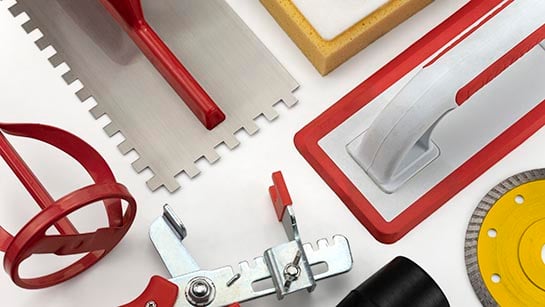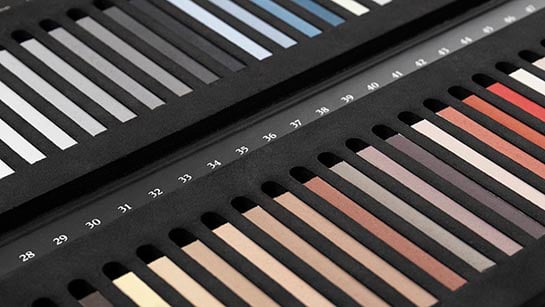-
MenuBack
-
TILES
-
-
-
-
-
-
-
OTHER CATEGORIES
-
-
-
-
OTHER MATERIAL
-
-
Installation and maintenance
-
- Recommendations
- PROFESSIONALS
- Contact
-
SOCIAL MEDIA
-
-
MenuBack
-
TILES
-
-
-
-
-
-
-
OTHER CATEGORIES
-
-
-
-
OTHER MATERIAL
-
-
Installation and maintenance
-
- Recommendations
- PROFESSIONALS
- Contact
-
SOCIAL MEDIA
-
1. Why is it essential to correctly calculate the number of tiles?
Incorrect calculations can lead to:
- Shortage: Risk of the model running out or being discontinued.
- Excess: Unnecessary costs due to overbuying.
- No extra stock: It's helpful to have spare tiles for future repairs.
2. How to calculate floor tiles step by step
Step 1: Measure the floor area
- Measure the length and width of the area.
- Multiply both measurements:
Area (m²) = Length (m) × Width (m)
Example: A living room of 5m x 4m:
Area = 5 × 4 = 20 m²
Step 2: Calculate tiles per square meter
With 30x30 cm tiles (0.09 m² per unit), you'll need approximately 11.1 tiles per m².
Step 3: Add between 10% and 15% extra
To account for cuts and waste:
Total area = 20 m² × 1.10 = 22 m²
You should order enough material for 22 m².
3. How to calculate wall tiles
Step 1: Measure height and width
Area (m²) = Height (m) × Width (m)
Example: A wall of 2.5m x 3m:
Area = 2.5 × 3 = 7.5 m²
Step 2: Subtract windows and doors
If there's a window measuring 1m x 1.5m:
Window area = 1 × 1.5 = 1.5 m²
Final area = 7.5 − 1.5 = 6 m²
Step 3: Include the 10-15% extra
Total area = 6 m² × 1.10 = 6.6 m²
Order material for 6.6 m².
4. Irregular areas and special tile layouts
- Irregular areas: Break them down into simple shapes (rectangles or triangles) and add up the areas.
- Diagonal installation: Requires more cuts; add an extra 15%.
5. Extra tips to keep in mind
· Installation pattern
Designs like herringbone or staggered layouts may require more tiles than linear patterns.
· Joint width
The thickness of the grout joints also affects the amount of material needed.
· Keep extra stock
It’s recommended to keep 5% to 10% of the same batch for future replacements.
6. Useful tools for measuring
· Measuring tape or laser
These help you take accurate measurements easily.
· Online calculators
There are digital tools that help calculate the exact amount of tiles based on dimensions and formats.
7. Conclusion
Calculating the correct amount of tiles for a tiling project is a key step to ensure the success of the installation. By following these methodologies, you can accurately measure the square meters you need, adding an extra percentage to cover waste and future repairs. Don’t forget to consider the installation pattern, joint size, and possible irregular areas. Proper planning will save you time, money, and ensure that your tiling project looks perfect and lasts long.
Related posts
-
 12/05/2023SMALL TILE LAYOUT PATTERNS TRENDS FOR 2023> Read morePosted in: Installation12/05/2023
12/05/2023SMALL TILE LAYOUT PATTERNS TRENDS FOR 2023> Read morePosted in: Installation12/05/2023 -
 15/05/2023THE IMPORTANCE OF GROUT IN TILE INSTALLATION> Read morePosted in: Installation15/05/2023
15/05/2023THE IMPORTANCE OF GROUT IN TILE INSTALLATION> Read morePosted in: Installation15/05/2023 -
 24/05/2023WHY ORDER 15% MORE CERAMIC MATERIAL?24/05/2023> Read more
24/05/2023WHY ORDER 15% MORE CERAMIC MATERIAL?24/05/2023> Read more -
 24/05/2023HOW TO TILE A BATHROOM EASILY AND PROPERLY> Read morePosted in: Installation24/05/2023
24/05/2023HOW TO TILE A BATHROOM EASILY AND PROPERLY> Read morePosted in: Installation24/05/2023


































